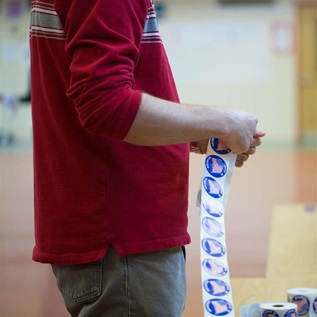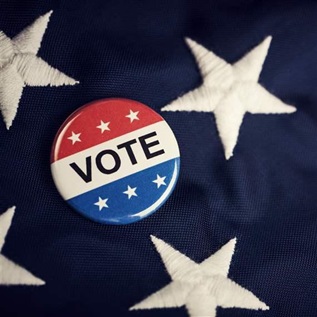Pew Index Shows 40 States Improved Election Performance in 2012
Waits reduced 3 minutes; District of Columbia is most improved; 6 states at bottom a 3rd time
Between 2008 and 2012, state election performance overall improved by 4.4 percentage points, according to The Pew Charitable Trusts' latest Elections Performance Index, released today. The expanded index makes it possible for all 50 states and the District of Columbia to measure how well they conducted elections compared not only with other states, but also over time.
This annual study allows states to measure election administration by looking at such indicators as wait times at polling locations, availability of voting information tools online, rejection of voter registrations, problems with registration or absentee ballots, rejection of military and overseas ballots, voter turnout, and accuracy of voting technology.
“We know common-sense solutions to improve elections exist. States are pioneering innovations that make a real difference in the efficiency and accuracy of their elections operations while also saving money,” said David Becker, director of Pew's election initiatives project. “The Election Performance Index allows policymakers to pinpoint what's working while also identifying areas where improvement is needed.”
Overall, 40 states and the district improved their scores in the 2012 election, compared with 2008. The scores of 21 states and the district rose at a rate greater than the national average, 19 states' averages improved but didn't keep pace with the national average, and 10 states' performance declined. The district improved the most—20 points—from 2008 to 2012 but still remained among the lower performers.
Overall, Georgia showed the sharpest decline, dropping 7 points from 2008 to 2012. The state's voter turnout fell below the national average, and the state had one of the largest increases in nonvoting due to disability or illness. Georgia also did not add online voter registration or post-election audits of voting equipment performance, which many other states have implemented since 2008. Hawaii and Vermont also had large drops in overall performance.
Other findings:
- 13 states offered online voter registration in 2012, compared with just two in 2008.
- Wait times decreased, on average, about 3 minutes since 2008. Florida had the longest wait and the largest increase in wait time in 2012—up 16.1 minutes from 2008 to 2012. Although both South Carolina and Georgia had long wait times in 2012, they also had the largest decreases, down 36.3 and 19.8 minutes, respectively.
- 18 states and the district reported 100 percent complete data in 2012, compared with only seven in 2008. Improved data collection allows analysts to more finely assess how well elections are run and how to fine-tune them.
- Overall voter turnout dropped 3.4 percentage points in 2012 from 2008. Turnout percentages in the Midwest and Northeast were higher than in the South in 2012. Two Midwestern states—Minnesota and Wisconsin—had the highest turnout rate in both 2008 and 2012.
- Although the percentage of eligible voters casting ballots dropped in 2012, compared with 2008, the rate of those deterred by illness or disability or because of problems with registration or absentee ballots also fell.
- More states offered online voter information tools in 2012.
- 30 states and the district required post-election audits of voting equipment performance in 2012, compared with 22 in 2008. Mandating a post-election audit allows states to ensure that voting equipment is functioning properly and delivering an accurate result.
- The highest-performing states—those in the top 25 percent—were Colorado, Connecticut, Delaware, Maryland, Michigan, Minnesota, Montana, Nevada, North Carolina, North Dakota, Washington, and Wisconsin.
- The lowest performers—those in the bottom 25 percent—were Alabama, Arkansas, California, Hawaii, Idaho, Kansas, Mississippi, New York, Oklahoma, Texas, West Virginia, and the District of Columbia. Six of these—Alabama, California, Mississippi, New York, Oklahoma, and West Virginia—were also ranked at the bottom in 2008 and 2010, and Mississippi was the lowest performer in all three years tracked.
Research shows that states offering more convenient opportunities for voter registration had a lower rate of rejected registrations, lower use of provisional ballots, and fewer voters unable to cast ballots due to registration problems. Meanwhile states that utilized the latest technology to conduct data matching of state voter registration lists, such as the Electronic Registration Information Center, had a reduced rate of provisional ballots cast and rejected and in individuals who experienced registration problems.
A state's overall performance is calculated and averaged based on the 17 indicators that make up the index, each agreed upon by an expert advisory group led by Charles Stewart III, professor of political science at the Massachusetts Institute of Technology.
This study draws upon quantifiable data for all 50 states and the District of Columbia from the U.S. Census Bureau's Current Population Survey Voting and Registration Supplement, the Election Assistance Commission's Election Administration and Voting Survey and its Statutory Overview, state election division records, the Survey of the Performance of American Elections, George Mason University's United States Elections Project, and Pew's reports “Being Online Is Not Enough” and “Being Online Is Still Not Enough.” Download the complete methodology.






